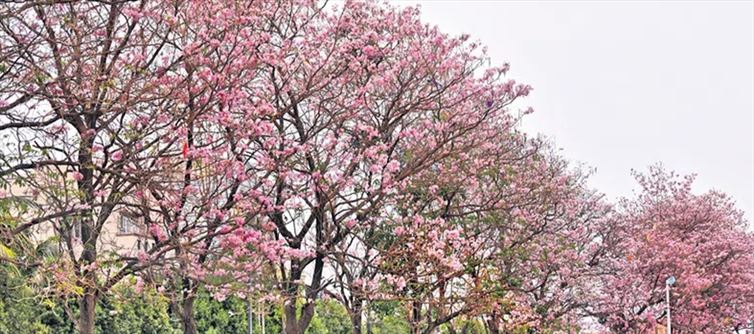Pushpa Telugu Movie Review, Rating
పుష్ప తెలుగు సినిమా రివ్యూ ,రేటింగ్
-
Oscar Winner M.M. Keeravani to Compose Music for Republic Day 2026 ..?
-
Unseen Photos from Salman Khan’s Farmhouse Go Viral ..?
-
Neha Kakkar Announces Break From Public Life ..?
-
These Bollywood songs awaken patriotism in your veins ..?
-
Abhijeet Bhattacharya's interview goes viral ..?
-
Why Vijay Walking Into the CBI Was a Strategic Blunder — Vijay’s Worst Move Yet
-
Pooja Hegde and Star Hero Inside Vanity Van In Privacy - How Unverified Gossip Becomes ‘Breaking News’
-
Korean Kanakaraju Glimpse: Varun Tej’s Intriguing Entertainer Raises Expectations
-
Understanding Fatty Liver: Causes and Prevention Tips
-
“I Am the Chezhiyan Character from Parasakthi,” Says Seeman
-
‘Amarkalam’ Set to Rock Theatres Again After 25 Years; Fans Excited as Ajith’s Landmark 25th Film Returns
-
Foundation Stone Laid for Mamallan Reservoir; Water Management Is as Crucial as Financial Management, Says M.K. Stalin
-
Political Interference Even in Arts and Literary Awards, Warns Chief Minister M.K. Stalin
-
Natural Remedies to Lighten Dark Skin Areas
-
43 Dams Constructed Under DMK Regime: Chief Minister M.K. Stalin Expresses Pride
-
New Water Reservoir to Be Built at Nemmelai at a Cost of ₹342.6 Crore; Foundation Stone to Be Laid by Chief Minister M.K. Stalin
-
Are There Good and Bad Loans? Here’s How to Make Loans Work for You
-
How agricultural land is divided in India and how daughters are entitled to their share:
-
Is Coconut Oil Safe for Your Skin in Winter? Expert Insights
-
A Cow Dressed Like Pooja Hegde Just Won the Internet
-
Kajal Aggarwal’s 2016 Drop Is a Silent Mic-Drop
-
Rashmika Spills the Truth — Sikandar Was Never the Same Film Twice
-
Indian Cricket Under Gambhir — The Most Embarrassing Shameful Phase in Indian Cricket History
-
Kerala Bus Tragedy — One Clip. Millions of Views. One Life Lost
-
Linux Feels Faster Because — The Silent RAM Heist Happening Every Time Windows Boots
-
India Once Watched Ramayana Together. Now We Fight Over It.
-
These Avengers: Doomsday Codes Aren’t Dates—They’re Warnings
-
Leaving India Didn’t End Priyanka Chopra's Career—It Finally Started It
-
Three Arrests, Two Ministers, One Silent CM — Is Revanth Reddy Losing Control?
-
Zack Snyder Just Reopened DC’s Biggest Wound — Evil Superman, Dead Lex Luthor, and a Ruined Earth
-
Pooja Hegde’s Next Move Could Shake the Fashion Industry
-
RBI’s 5 New Rules for 2026 That Makes Managing Your Credit Health Easier
-
How to Backup WhatsApp Chats, Photos, and Videos on iPhone: A Complete iOS Guide
-
Stress Relief: Is Work Pressure Increasing? Here’s How to Find Mental Balance
-
How to Send High-Resolution Photos on WhatsApp Using an iPhone Without Losing Quality
-
Unlocking the Power of Flaxseed for Healthier Hair
-
How to Send Silent or Muted Direct Messages on Instagram
-
YouTube Parental Controls: New Features Let Parents Manage Screen Time
-
Instagram Tips: What is the Right Way to Download Instagram Reels
-
Good CIBIL Score? Here’s How You Can Ask Your Bank to Lower Your Interest Rate
-
The RBI Introduces a New Rule Regarding CIBIL, Completely Changing the Credit Score Landscape
-
Essential Tips for Cooking Delicious Mushrooms
Empowering 140+ Indians within and abroad with entertainment, infotainment, credible, independent, issue based journalism oriented latest updates on politics, movies.
India Herald Group of Publishers P LIMITED is MediaTech division of prestigious Kotii Group of Technological Ventures R&D P LIMITED, Which is core purposed to be empowering 760+ crore people across 230+ countries of this wonderful world.
India Herald Group of Publishers P LIMITED is New Generation Online Media Group, which brings wealthy knowledge of information from PRINT media and Candid yet Fluid presentation from electronic media together into digital media space for our users.
With the help of dedicated journalists team of about 450+ years experience; India Herald Group of Publishers Private LIMITED is the first and only true digital online publishing media groups to have such a dedicated team. Dream of empowering over 1300 million Indians across the world to stay connected with their mother land [from Web, Phone, Tablet and other Smart devices] multiplies India Herald Group of Publishers Private LIMITED team energy to bring the best into all our media initiatives such as https://www.indiaherald.com





 click and follow Indiaherald WhatsApp channel
click and follow Indiaherald WhatsApp channel